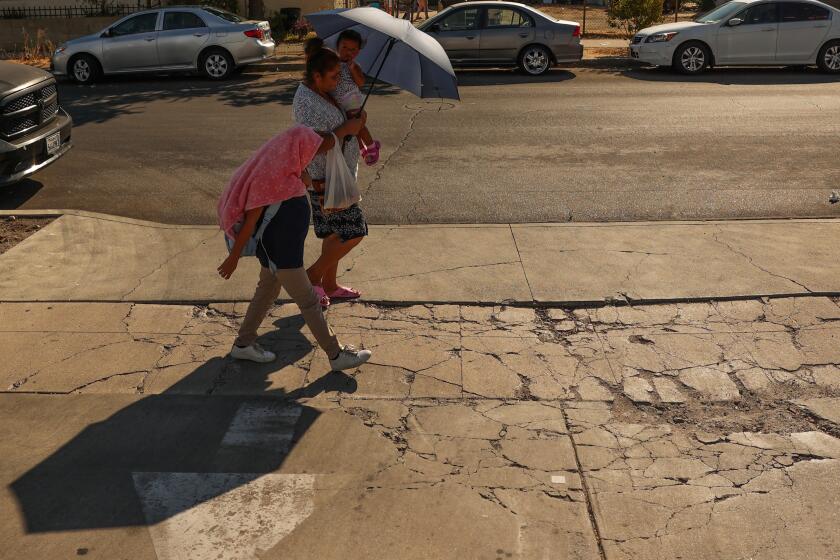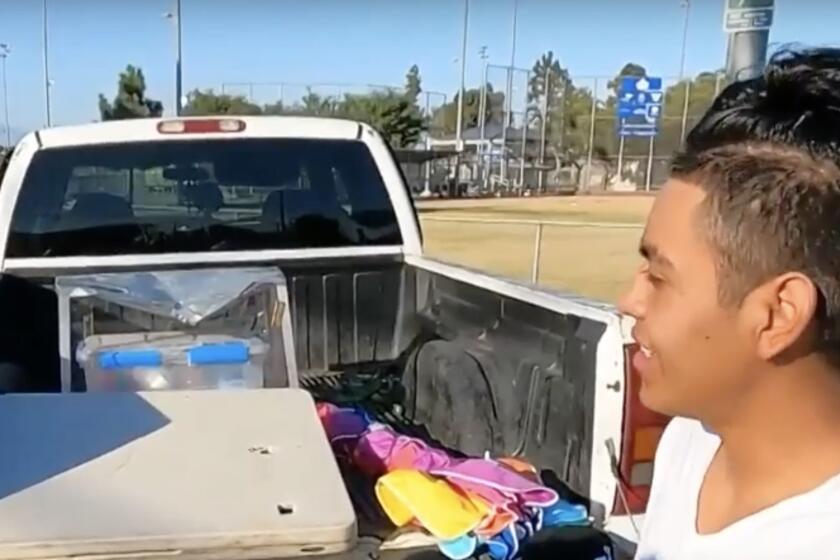Dispute settled over historic cemetery in Pacific Palisades
With a push from Los Angeles City Councilman Bill Rosendahl and a nudge from the city’s Cultural Heritage Commission, a long-running dispute over a historic rancho-era cemetery in Pacific Palisades has been laid to rest.
In a deal that will help preserve the little-known Pascual Marquez Family Cemetery, neighbors have agreed to sell a portion of the land in front of the burial ground at a greatly reduced price. The space will allow for landscaping and provide access to winding San Lorenzo Street.
Once part of a vast cattle ranch, the cemetery stands amid the houses and swimming pools of Santa Monica Canyon, hidden from view by an aging wood fence. The historical landmark measures a fraction of an acre and holds the remains of roughly 30 early Angelenos, including the guests of a disastrous New Year’s Eve gathering.
The agreement calls for La Señora Research Institute, a canyon nonprofit, to pay $35,000 for the parcel next to the street. The rest of the land’s $127,500 value will be considered a donation by owners Fred Marcus and Davida Rochlin.
La Señora has agreed to raise funds to remove the fence that now edges the front of the parcel and replace it with an iron fence that will allow passers-by to see what will be known as San Lorenzo Garden. The institute will landscape the long-neglected property and be allowed to hold six events there a year.
“We’re creating a sense of place for the cemetery,” said Patricia Nettleship, the institute’s director. “People will be able to drive by and see that it’s part of the neighborhood.”
In 1839, the Mexican government granted the area — which eventually became portions of Santa Monica and Pacific Palisades — to two Mexican citizens, Francisco Marquez and Ysidro Reyes. Marquez set aside land for burials within view of his adobe.
The cemetery contains the remains of Pascual, his youngest son, and perhaps 30 other family members, friends and American Indian servants — including a dozen or so guests who died of botulism after eating home-canned peaches at a New Year’s Eve gathering in 1909.
Pascual Marquez, who died in 1916, was the last to be buried in the cemetery.
In the mid-1920s, the land was sold to Santa Monica Land & Water Co., which subdivided it for houses. The divisions left the cemetery without street frontage, although family members were allowed to enter it along a narrow easement. The frontage land on either side of the easement stood vacant for many years, but cemetery supporters worried that it would be developed.
Then, in October, the owners began digging on the southern portion of the property to lay foundations for their planned 1,800-square-foot residence.
Ernest Marquez, 86, Francisco’s great-grandson, had alerted Marcus that an oral history suggested the possibility of remains buried outside the cemetery walls. An archaeologist dug in a few spots but found no evidence on the southern portion.
In November, a Marquez family member asked the Cultural Heritage Commission to expand the historic-cultural monument that now encompasses the cemetery. The city ordered Marcus and Rochlin to halt construction.
On Jan. 13, the commission recommended that the northern portion of the frontage be designated as part of the monument. That spurred both sides to finalize negotiations, with Rosendahl and a coalition of family members, neighborhood groups and preservationists urging them on.
Much work lies ahead. Marquez and Nettleship say they plan more exploration to see whether remains exist on the northern property outside the cemetery wall. They intend to clear weeds from the cemetery and replace grave markers. Marcus, meanwhile, said he looks forward to resuming construction.
Sharon Kilbride, a cousin of Ernest Marquez, said Marquez and Reyes family members previously unknown to one another have reunited because of the cemetery.
“I used to come here as a child and put flowers on the graves,” she said. “It’s been in my heart for a long time.”
More to Read
Sign up for Essential California
The most important California stories and recommendations in your inbox every morning.
You may occasionally receive promotional content from the Los Angeles Times.











